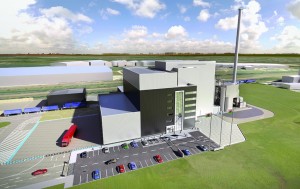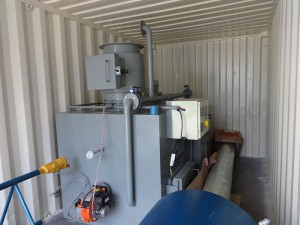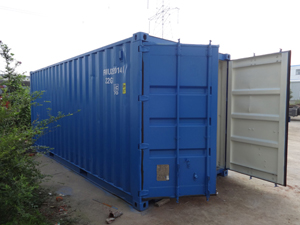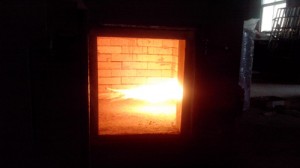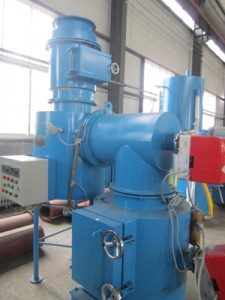Doubel Combustion Chamber
All Incinerators are Doubel Combustion Chamber with One Fuel Burner Each. After Burner Technology for Completely Combustion and Cleaner World.
Read MoreHigh Temperature Incineration
Temperature Range 800 Degree to 1200 Degree in Combustion Chamber. Temperature Thermocouple Monitor and Controller. High Quality Fire Brick and Refactory Cement.
Read MoreGet Lastest News
There are latest incinerator news like technical, public news, business tender for medical waste incinerator,animal incineration, pet cremation
Read MoreNanjing Clover Medical Technology Co.,Ltd.
Email: sales@clover-incinerator.com | Tel: +86-25-8461 0201
Regular model incinerator for market with burning rate from 10kgs to 500kgs per hour and we always proposal customer send us their require details, like waste material, local site fuel and power supply, incinerator operation time, etc, so we can proposal right model or custom made with different structure or dimensions.
Incinerator Model YD-100 is a middle scale incineration machine for many different usage: for a middle hospital sickbed below 500 units, for all small or big size family pets (like Alaskan Malamute Dog), for community Municipal Solid Waste Incineration, etc. The primary combustion chamber volume is 1200Liters (1.2m3) and use diesel oil or natural gas fuel burner original from Italy.
Latest Post
the proposed Puerto Rico Resource and Renewable Energy Project in Arecibo
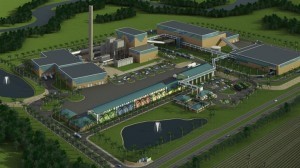
SAN JUAN — Eight years into a drive to build a $650 million waste-to-energy plant in Arecibo, the first of its kind in Puerto Rico, Energy Answers is moving closer to its goal. But roadblocks remain, including one serious enough to challenge the project’s financial viability.
Despite uncertainty, EA has to date invested $15 million in development expenses and remains committed to the project, according to one of the company’s local advisers.
“All new things engender a certain reserve, an apprehension. This is something new,” said EA’s environmental consultant and attorney Rafael Toro-Ramirez referring to the incinerator that the Albany, N.Y.-based company touts as a viable solution to Puerto Rico’s waste management crisis.
Out of 28 landfills islandwide, nine have sections complying with federal standards but only two — Ponce and Humacao — are in full compliance. Seven landfills are in the process of being closed down, further reducing the island’s waste disposal capacity.
Meanwhile, recycling is minimal (under 12 percent) and the island continues to generate garbage at the staggering rate of 3.6 million tons per year.
Despite strong opposition by environmentalists, EA has passed the federal government’s permitting process and is now waiting for the Puerto Rico Environmental Quality Board to decide on the two most important permits at the local level.
While sailing the permitting process would be a big step forward for EA, the coast is far from clear.
If the incinerator is to stay in the running, EA must resolve key business aspects: namely, secure the needed waste stream and the water supplies essential for the plant’s operation.
For a while these issues appeared to have been resolved when, during the former Luis Fortuño administration, EA arranged with separate government agencies to have steady access to both these vital resources. EA also signed up to supply the Puerto Rico Electric Power Authority with the energy the plant would generate.
Things took a different turn once the García Padilla administration came in. The favorable arrangements that EA had managed to secure were overturned and the company has found itself left without the supply guarantees that a costly investment of this kind needs to proceed.
Unless the situation changes in favor of the company, the plant’s financial viability appears to be seriously in doubt right now.
Meanwhile, opposition to the project, which began with a Coalition of Organizations Against the Incinerator, has broadened to include a wide cross-section of Puerto Rican society. Opponents include the Sierra Club and Arecibo Basura Cero (Zero Garbage), the Mayors Association, the Mayors Federation, the Puerto Rico College of Physicians and Medical Doctors, and cattle farmers from the island’s north coast.
Financial viability
Puerto Rico’s first incinerator, to be built on a 36-acre lot, would burn up to 2,100 tons of municipal solid waste daily and produce 77 MW of renewable energy. The plant also would recover recyclables and up to 280 tons daily of ferrous and non-ferrous materials.
To be viable, an incinerator needs three things: a supply of waste, enough water to run the operation, and a disposal site for the large amount of ashes generated in the process.
EA says ash disposal is no problem but it can’t say the same about garbage or water.
The island produces some 10,000 tons of garbage each day of which EA would need 20 percent on a daily basis.
To secure the needed waste stream, EA needed to turn to individual townships and arrange for them to send their waste to the Arecibo incinerator.
Instead, it found an easier way out.
In April 2012, the company signed a contract with Puerto Rico’s Solid Waste Management Administration binding the agency to compel island townships to send their solid waste to the company, a service for which they would have to pay a dumping charge or tipping fee of $36 per ton.
This a higher amount than the $18 to $32 most townships pay to dispose of garbage in the island’s landfills (with the exception of a few towns that charge up to $100 a ton for this service).
Also, the tipping fee would be subject to yearly reviews with base charge increases tied to the inflation level.
Island mayors wasted no time in showing their displeasure. They complained the contract undermined the principle of municipal autonomy and endangered their budgets.
In 2013, the Puerto Rico Justice Department found the contract to be in violation of the Autonomous Municipalities Act of 1991 on the heels of which SWMA sued EA to request the contract’s invalidation. The case is before San Juan’s Court of First Instance.
EA’s Toro underplayed the loss of the waste contract, which would force EA to negotiate individually with each township.
According to Arecibo environmentalist Javier Biaggi, the decision “doesn’t stop the project… but they would have to go town by town like they started doing initially.”
That might not be easy.
The two organizations that group the island’s mayors by political affiliation, namely the Mayors Federation of the New Progressive Party and the Mayors Association of the Popular Democratic Party have expressed opposition to the incinerator. Unless there is a change in their stance, EA might have a tough job enlisting mayors to its cause.
The only NPP mayor reportedly backing the incinerator is the mayor of Arecibo. His support is said to be based on economics: By one estimate, the township stands to benefit to the tune of $2 million in yearly business license taxes (known as “patente municipal.”)
In defending the contract that EA signed with SWMA, Toro said it protects the Puerto Rican public.
“The contract guaranteed that towns will have to manage their waste legally,” Toro said.
He expressed little sympathy with mayors who find the tipping fee onerous.
“It’s not the monetary cost but the environmental cost that must be considered,” Toro said. He pointed to the future environmental costs that will be incurred from continuing to dispose in landfills that do not meet federal standards.
“Forget that the incinerator belongs to EA. It is an alternative that complies with the law,” he said.
And then there is the issue of water.
In December 2013, the Department of Natural and Environmental Resources announced it would not grant EA a water franchise to draw water from Caño Tiburones’ El Vigia Pump Station despite a previous arrangement EA had worked out with the agency during the Fortuño administration.
As part of the earlier agreement, signed in August 2012, EA committed to making certain capital improvements at the station in exchange for access to the pump station.
Toro said tat out of 180 million gallons of water entering the lagoon daily, EA needs two million per day for processes and cooling.
Caño Tiburones is one of the island’s most important hydrological resources. In justifying its latest decision, DNER said the continuous extraction of water from El Vigia Pump Station would lead to “the degradation of the natural reserve’s ecosystem.”
EA has requested a reconsideration and the case is currently under administrative review. A DNER spokesperson said a public hearing has been scheduled for Oct. 25.
Permits
AE’s second attempt at establishing Puerto Rico’s first incinerator (an initial attempt took place between 1999 and 2001 under the name of Renova) is proving a drawn-out process.
The company has been pursuing its goal for eight years: according to Toro, it originally submitted the project in 2007 during the administration of Gov. Anibal Acevedo Vilá.
Despite receiving a temporary air permit from the U.S. Environmental Protection Agency in 2012, it wasn’t until March 2013 that the Prevention of Significant Deterioration permit finally came through. Although opponents challenged the decision, the Environmental Appeals Board upheld the permit but instructed EPA to update the greenhouse gas emissions control requirements in the PSD permit.
According to José Font, in charge of the Caribbean Environmental Protection Division, the agency evaluated the project “in an impartial manner.”
Toro said EA has most of the permits it needs for the incinerator.
EQB has already approved EA’s environmental impact statement but must still decide on the air emission source permit and a permit for handling non hazardous solid waste, Toro said.
In addition to EPA’s PSD, the company has the U.S. Army Corps of Engineers’ Wetlands Mitigation Permit (requiring EA to undertake compensatory wetlands mitigation) and the Planning Board’s site permit.
Some of these permits are currently in litigation, however. According to a local environmental lawyer, challenges to the Wetlands Mitigation Permit and the PSD permit have been filed in federal District Court in San Juan and D.C. District Court, respectively.
In their petition to the U.S. Court of Appeals for the District of Columbia Circuit, opponents asked the court to review EPA’s decision granting the PSD and the Environmental Appeals Board decision confirming the permit. The petition was filed July 17, 2014.
Opposition
Arecibo’s WTE plant will use EA’s patented Processed Refuse Fuel technology for more efficient energy production and 30 percent less ash emissions.
Company officials have dismissed concerns over air pollution, saying the public’s fears are based on an outdated picture of waste combustion plants emitting soot and smog into the air.
Passing the intensive EPA review shows that the incinerator “is safe and complies with the strictest U.S. air standards,” officials told one newspaper.
To obtain the EPA air permit, the company had to demonstrate that its pollution controls at the plant would be as strict or stricter than those of any other plant under construction in the U.S. today, according to EPA.
For all the new technology and the conscientiousness with which the permitting agencies are evaluating the project, opponents remain skeptic about the plant’s safety.
Air and water contamination are high on their list of concerns but they also worry about the disposal of toxic ashes.
According to Biaggi, EA officials have said the plant would generate some 400 tons of ash daily but the amount could be closer to 600 tons, enough to turn Arecibo into “another Sahara desert.”
While he would not disclose where the ashes would be discarded, Toro said there are three or four landfills that comply with Subtitle D of the Resource Conservation and Recovery Act (RCRA), regulating such disposals.
Opponents also are concerned about the ultra fine particles from burning materials, including organic chemicals and toxic substances such as dioxins and furans, to be released into the air by the incinerator. Because of their minuscule size, these particles are difficult to capture in pollution control devices. Fine particulates can remain suspended in the air for a long time and also travel far. Besides posing a health risk to people, these pollutants contaminate the food chain.
Lead emissions are yet another source of worry, especially since the area where the WTE plant will be located has already suffered from this type of contamination.
In 2011, EPA levied a $112,500 fine against Arecibo-based Battery Recycling Co., a lead smelter that recycles used motor vehicle batteries and produces about 60 tons of lead per day. The company, located a short distance from the proposed incinerator, committed to investing more than $3 million in pollution control upgrades and community projects.
Opponents have raised other arguments against the incinerator: It will generate far too few direct jobs and will thwart the island’s recycling efforts which the government should be promoting aggressively instead.
The incinerator will create 150 permanent direct jobs but as many as 4,000 jobs during the three-year construction period, Toro said.
In addition to investing $650 million in the plant, the company also plans to spend approximately $30 million annually in local purchases of goods and services, according to officials.
Puerto Rico and Maryland
Despite setbacks, Energy Answers appears determined to go on.
“We are going to continue defending the project,” said Toro.
To opponents, the company’s determination is a reflection of the potentially high financial rewards tied to this type of investment.
According to one estimate, the incinerator stands to generate more than $100 million per year in annual revenue from waste incineration, biomass energy production, and recovery of recyclables and ferrous (iron) and non-ferrous scrap metal.
In addition to its Puerto Rico venture, EA currently is building the nation’s second largest WTE incinerator in the Curtis Bay neighborhood of Baltimore. The $1 billion plant would have a capacity to handle 4,000 tons of waste daily.
As in Puerto Rico, it has generated stiff opposition.
The project was recently halted when Maryland state authorities issued a temporary work stoppage order over the company’s failure to purchase emissions reductions credits (ERC) required as part of restrictions placed on its air quality permit. According to one newspaper report, the company faced $8 million in fines for failing to buy the emissions offsets.
Planning application submitted for massive Deeside incinerator plant.
The American-owned firm behind the Parc Adfer waste treatment facility has submitted its planning application to Flintshire County Council.
Energy-from-waste specialist Wheelabrator has submitted plans for its proposed 200,000 tonnes per year capacity incineration plant on the edge of Deeside industrial estate.
The company was named as the preferred bidder for a 25 year contract to treat household waste on behalf of North Wales Residual Waste Treatment Project (NWRWTP) – the five council partnership which includes Flintshire, Isle of Anglesey, Conwy, Denbighshire and Gwynedd.
The firm hopes that planning consent could be granted during the first half of 2015, allowing construction work to commence late in the year.
If successful Wheelabrator expect the facility to be operational by 2018, the site will the then supply waste heat through steam pipes to nearby industrial or commercial users, as well as incinerate tonnes of household waste, diverting it from landfill sites.
According to the five councils, the facility will help them towards meeting the Welsh Government target to recycle 70% of waste by 2025.
NPA and Vision talk trash over garbage incinerator
Non-Partisan Association mayoral candidate Kirk LaPointe is trash talking political rival Vision Vancouver for apparently doing nothing to stop the building of a new garbage incinerator in Metro Vancouver.
“[Mayor Gregor Robertson’s] plan to build an incinerator without community consultation, without transparency and without actual proven technology is an attack on Vancouver,” LaPointe said at a news conference Thursday.
But the fact is the mayor and Vision Vancouver are staunchly opposed to an incinerator and have made that position very clear to Metro Vancouver, the organization that will decide sometime in 2015 how and where to deal with the region’s garbage.
“We are completely opposed to incineration… it’s great that [the NPA] now also seems to share that position,” Coun. Andrea Reimer said Thursday, adding it’s “frustrating” that the NPA hasn’t come out with any new policies.
Council voted in 2013 to consider using a piece of property at the foot of Main Street and Kent Avenue South for a waste centre, but only if it meets strict environmental and health criteria.
The city’s website states it “does not support garbage incineration facilities, and would not allow the burning of garbage at the proposed facility under any circumstances.”
One of the technologies the city said it would consider is gasification, which has fewer emissions and converts waste to synthetic natural gas.
But LaPointe is also strongly opposed to gasification in city limits, saying it is an unproven technology that poses environmental and health concerns.
Instead, LaPointe supports unspecified landfill options, recycling options and sorting technologies.
Regardless, Metro Vancouver has not yet chosen where to put a waste plant.
“The NPA believes strongly in fighting to keep our air clean and our citizens healthy, but Vancouver’s waste-to-energy plans are likely to generate more emissions and harmful chemicals into the atmosphere,” LaPointe says. “An incinerator or gasification plant is simply not a green option. There are significant health and environmental challenges with both options.”
He says Gregor Robertson and Vision Vancouver, the supposed defenders of all things “green,” are doing nothing to stop the building of a costly new garbage incinerator in Metro Vancouver and are proposing their own “gasification” plant at Main St and Kent Ave. “They have failed to defend the interests of Vancouverites.”
LaPointe says he and an NPA government will fight the plans no matter where the incinerator might be built, and instead concentrate on ways to increase reducing, reusing and recycling the City’s solid waste.
“The only thing less green than burning or “gasifying” garbage in Vancouver is using fossil fuels to ship it elsewhere for burning. We share our air with the region’s other municipalities.”
LaPointe says fiscal concerns accompany the health and emissions worries. “The construction of a new incinerator represents significant risks for taxpayers,” he says, noting its cost of construction has increased by almost $50 million to the current $517 million estimate. “Vision Vancouver’s failure to address the cost issue again demonstrates its failure to manage the City financially.”
The Burnaby waste-to-energy incinerator, which loses money annually, is expected to lose another $16 million in this year.
LaPointe says Metro Vancouver has publicly identified three potential sites for a solid waste incinerator, while six additional, secret sites are under consideration. The City of Vancouver has also proposed a gasification facility in South Vancouver and that has residents concerned.
Jay Jagpal, NPA Park Board candidate and South Vancouver resident, says: “My community is very concerned about the lack of transparency around this project, with its potential to have an impact on so many people. This is typical behaviour of Vision and Vancouverites deserve better.”
Metro Vancouver’s proposed Bylaw 280, a plan to raise costs on waste disposal, is a key step in subsidizing these plants. An NPA government would work to prevent the bylaw from coming into force.
Ebola virus in Liberia
The Ebola virus-infected patients were burned in what was once a cattle slaughterhouse. Here the femur, hip and even skulls still unburnt sprawling creating a horrific scene.
Ian Birrel – reporter Dailymail, the UK has witnessed the grisly scene inside a crematorium identify patients infected with Ebola virus in Liberia. “When I walked into the place of cremation, surrounded by a wall outside Monrovia, I saw a pile of smoldering ash and smoke rising from it. I look closely, are scattered in the flickering flames which the bones, the femur and the hip joint, including even the skull. Here are the rest of the bodies of 15 victims of Ebola virus infection, “Ian said.
With Ian Birrel, the above is just one of the many horrific scenes that he faced in the Ebola outbreak in the West African country.
In the footsteps of the family have been infected with Ebola relatives, in Monrovia, reporters saw Ian Birrel extremely tragic circumstances of the victim. On the street, dead bodies because Ebola is still wandering. In the medical center, patients crowded. Beds are not enough to provide for the patient. In fact, for many people, the bed had before that patient mortality, were considered a “death cage”, making them fear that refusal bed.
Daniel James, a volunteer Red Cross in Kailahun, Sierra Leone told horror stories to bring back the dead, it emits cries a bit of a wheeze. Even the seasoned staff of the World Health Organization (WHO) also could not have imagined a corpse lying exposed for 3 days to produce such sounds. On an average day, they must be buried 6 dead bodies for Ebola infection.
By this time, the World Health Organization (WHO) has announced the number of deaths due to Ebola virus has risen to 3,000, but according to sources, this figure is only 1/3 the actual numbers. WHO also warned that, within the next 6 weeks, 17,000 people at risk of infection and death. The worst forecast also said 1.4 million people, especially in countries such as Liberia and Sierra Leone are at risk of infection.
CLOVER focussed on containment of Ebola
The past few months have been a very busy time for CLOVER. The outbreak of Ebola in West Africa has resulted in all of the Global aid organisations contacting CLOVER to support them in getting the necessary equipment to the effected regions.
The United Nations, UNOPS and local agents are now in constant contact with CLOVER in their attempts to stop the potential of further contamination by destroying medical waste streams at the source.
Regular model incinerator for market with burning rate from 10kgs to 500kgs per hour and we always proposal customer send us their require details, like waste material, local site fuel and power supply, incinerator operation time, etc, so we can proposal right model or custom made with different structure or dimensions. CLOVER have a wide range of medical Incinerators that allow for small batches of 10kg up to an impressive 600kg per hour. Many years of research and development has made CLOVER a company that is globally renowned and respected and are the go to company for a diverse set of organisations when such problems arise. The quality of our China manufactured product is of the highest standard and the warranties reflect the performance and life cycle of our Incinerators. All of the organisations have shown great interest in the Innovative and high performing mobile model that gives both performance and mobility, we currently have a large number of this model on route to the region as we speak.
incinerator-for-ebola
We are now talking to the individual countries about their ongoing requirements to support the process of this virus being contained and eventually eradicated. Our range of mobile incinerators are the ideal solution to enable mobile and instant waste management to areas that are restricted due to infrastructure and remoteness.
CLOVER will continue to strive on many fronts to ensure that our product range is the best in the Incinerator market and part of that process is the ability to service markets and disaster areas in the quickest possible time. This we will do with the utmost priority in servicing all of the Aid organisations and government agencies to win the battle against Ebola.
We urge everyone who can assist to do their utmost to help and support the people of West Africa, in the belief of bringing this problem to an end, Join us on our Social Media platforms to support the Ebola effort.
If you have any immediate requirements for one of our medical Ebola incinerators please contact with us know:










